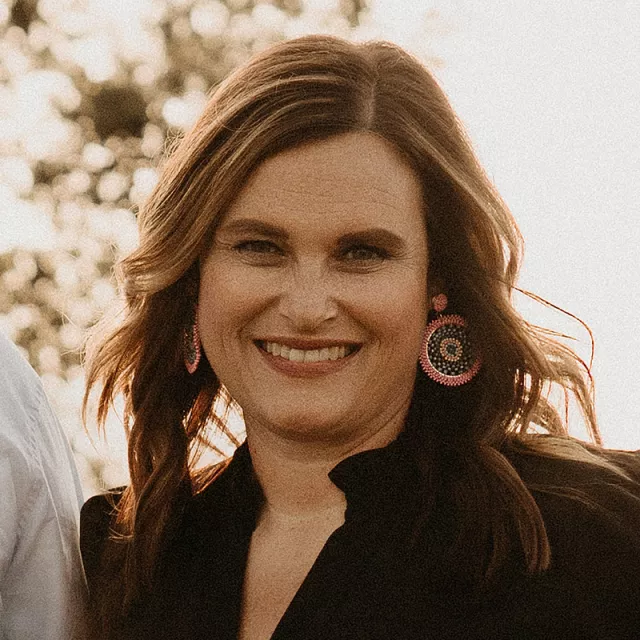Meet Kid Captain Hudson Ferris

The Ferris family never expected a vacation to change their lives. But it was during a spring break stay at a Florida beach when their youngest son, Hudson, began to complain of strange pain and fatigue.
“When we get back, we are figuring this out,” his mother, Traci, remembers thinking at the time, which was around Hudson’s ninth birthday. Up to that point, Traci said Hudson had been a very healthy child.
Multiple trips to Hudson’s local pediatrician’s office for blood work and other tests did not reveal a cause for what ailed him. “They kept thinking it was growing pains,” Traci says. “He was kind of at that age when kids grow a lot. They were stumped.”
Hudson’s father, Derrick, said it was several months before they were referred to University of Iowa Health Care Stead Family Children’s Hospital after a scan showed a mass on Hudson’s chest, which turned out to be a 6-centimeter tumor on his vertebrae. At Stead Family Children’s Hospital, Hudson was diagnosed with stage IV high-risk neuroblastoma, an aggressive cancer that had spread through his body.
“It was unbelievable how much cancer was in his body,” Traci recalls, noting they felt overwhelmed to hear he had stage IV high-risk neuroblastoma — typically associated with much younger patients — with plans for 18 months of treatment. “We soon realized this would be the longest 18 months of our lives.
“We will never forget Dr. (Mariko) Sato, his oncologist at the time, telling us, ‘He can beat this, but it’s going to be a tough fight,’” she says. “We had no idea how tough of a fight this would be.”

A ‘tough fight’ with stem cells
Hudson started chemotherapy almost immediately — four rounds over four months — followed by surgery to remove the tumor. After the surgery, Hudson had one more round of chemotherapy before being transferred to the children’s hospital at the University of Wisconsin-Madison for stem cell transplants. At the time, Stead Family Children’s Hospital did not have a doctor on staff for stem cell transplants.
Hudson was scheduled for two transplants, spending Christmas in the hospital. They took a short break and went home, then returned for the second stem cell transplant in February.
“For neuroblastoma, it’s really hard to keep that cancer at bay, so the protocol calls for two transplants,” Traci says, adding that Hudson had to undergo chemotherapy again before the second transplant, which uses a patient’s own stem cells following the chemotherapy.
“You do it once and you wait a few months to get your body back up to where it can survive a second one, and they do a second one to make sure there are no lingering cancer cells in the bone marrow,” Derrick notes. “They want to make sure they kill all the cancer in the bone marrow.”
After the second stem cell transplant, Hudson spent three weeks undergoing radiation, and then the family returned to their “happy place” at Stead Family Children’s Hospital, Traci says, to complete five rounds of immunotherapy, which stimulates the immune system to fight cancer.






“When Hudson came back from his transplants, we knew that he had been through a lot. We know that his type of cancer is aggressive, and the timing of continuing therapy was crucial,” says oncologist David Dickens, MD, FAAP. “But we also know how tough Hudson proved to be and proceeded with his treatment. Any and every child has the capacity to beat the odds and that is what we always count on, becoming a survivor.”
Creating a memory of hope
One particularly fond memory happened during a hospital stay in a room with a view of Kinnick Stadium, where Hudson was able to participate in “The Hawkeye Wave” during a home football game.
“He was not feeling well at all, and was hooked up getting chemotherapy during the game, but it was absolutely the most emotional experience,” Traci says.
“The care team made us as comfortable as they could during an uncomfortable time in our life,” Derrick adds.
Hudson also received support from his community: His elementary school sponsored a fundraiser that created “We Wave for Hudson” T-shirts. The school also created a robot that could drive around to his classes, so he felt like he was at school even as he missed one year while he was hospitalized. He also did virtual learning with both the hospital staff and school staff, so he was able to continue with his same class when he returned.
Hudson finished treatment in October 2022 and will celebrate two years cancer-free this November. Hudson, who wears hearing aids after sustaining partial hearing loss due to the chemotherapy, returns to Stead Family Children’s Hospital every six months for checkups to monitor his health.
“We’re on a really good path here and he’s doing remarkably well today,” she says. “He is very determined, and that’s how he got through everything he’s been through.”






Now 12, the Eldridge seventh grader enjoys riding his bicycle, hanging out with friends, camping and fishing, and would like to participate in sports again. A member of a tractor club, Hudson owns two antique tractors that he takes to shows in the Quad Cities, and he dreams of being a farmer someday.
His parents are grateful to the hospital staff for all they have done to make Hudson and the rest of the family feel special throughout his treatment.
“Our experience at Stead Family Children’s Hospital has been nothing short of amazing,” Traci says. “We’re so lucky to have that staff basically in our backyard, only 45 minutes away. They take as much time as needed to answer any question we ever had. They’re truly like our family.”
Photos from Kids Day 2024





Patient Stories

